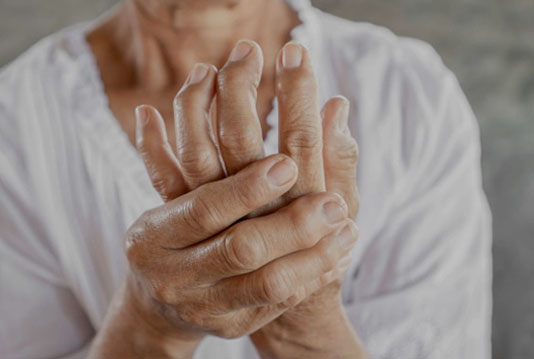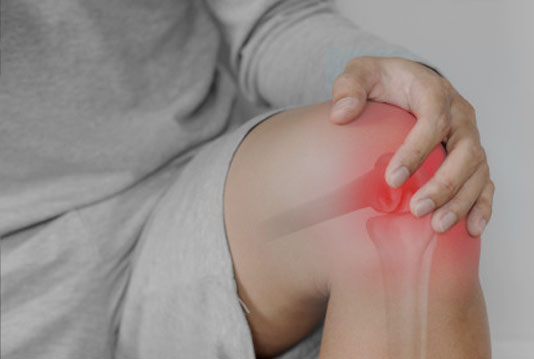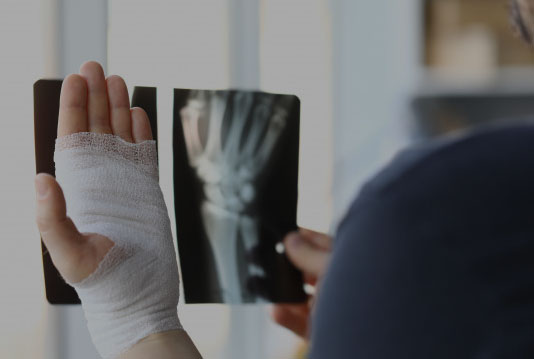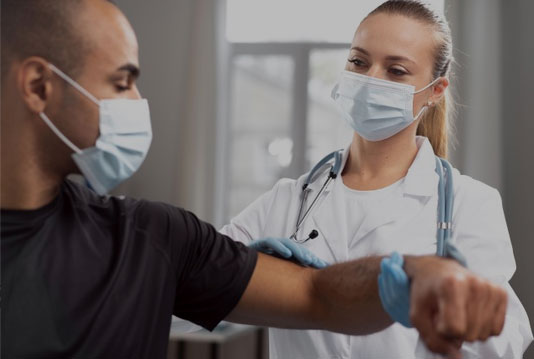What is PRP?
PRP – platelet rich plasma – is a special preparation of your own blood used to treat soft tissue injuries. A special centrifuge allows us to extract the plasma with its platelets and growth factors from your own blood. For injuries to muscles, tendons, and ligaments, we also include concentrated white blood cells to promote healing, reduce pain, and improve function.
Many famous athletes — golfer Tiger Woods, tennis star Rafael Nadal, and several others — have received PRP for various problems, such as sprained knees and chronic tendon injuries. These types of conditions have typically been treated with medications, physical therapy, or even surgery. Some athletes have credited PRP with their being able to return more quickly to competition.
What makes LR-PRP special?
For soft tissue injuries and tendinitis, we use LR-PRP, meaning Leukocyte Rich PRP. Leukocytes are white blood cells, and seem to help promote healing of the soft tissues when concentrated and injected as part of a PRP preparation.
How do we get PRP?
The process begins with a simple blood draw in our office. You do not need to go to the hospital or fast before the procedure. In fact, we prefer that you eat and drink normally to stay well hydrated. The syringe with your blood is then placed into a centrifuge where it is spun at high speed to separate the different components of your blood into different layers in the same tube. The specialized centrifuge then uses photon cytometry to selectively remove the plasma, platelets, and white cells from this syringe and collect them for re-injection into the damaged tissue.
How does it work?
PRP concentrates your body’s own growth factors, derived from the platelets and plasma. In fact, PRP can contain 1500 protein-based bioactive factors.
Platelets are part of the clot which forms at any injury. And when they clot, they release various growth factors to help start the healing process. By concentrating them we can provide that same healing response to a damaged joint.
The white cells in LR-PRP also seem to play a beneficial role in processing the injured tissue and speeding healing.
Growth factors in PRP can help increase collagen production, decrease destructive enzyme activity in the joint, and reduce inflammation.
These growth factors include:
- Platelet derived growth factor (PDGF) - Enhances collagen synthesis, proliferation of bone cells, fibroblast chemotaxis and proliferative activity, macrophage activation
- Transforming growth factor ß (TGF-ß) - Enhances synthesis of type I collagen, promotes angiogenesis, stimulates chemotaxis of immune cells, inhibits osteoclast formation and bone resorption
- Vascular endothelial growth factor (VEGF) - Stimulates angiogenesis, migration and mitosis of endothelial cells, increases permeability of the vessels, stimulates chemotaxis of macrophages and neutrophils
- Epidermal growth factor (EGF) - Stimulates cellular proliferation, differentiation of epithelial cells, promotes cytokine secretion by mesenchymal and epithelial cells
- Insulin-like growth factor (IGF) - Promotes cell growth, differentiation, recruitment in bone, blood vessel, skin and other tissues, stimulates collagen synthesis together with PDGF
- Fibroblast growth factor (FGF) - Promotes proliferation of mesenchymal cells, chondrocytes and osteoblasts, stimulates the growth and differentiation of chondrocytes and osteoblasts
What does PRP treat?
LR-PRP is generally used to treat both acute and chronic injuries to tendons, ligaments, and muscles. Some of the most common applications include
- Tennis Elbow
- Golfer’s Elbow
- Patellar Tendonitis
- Achilles Tendonitis
- Muscle Tears
Typically, we use PRP as a final treatment option for these conditions before attempting surgery. But because it is usually an out-of-pocket expense, not everyone is willing to try it. But if you are not a candidate for surgery, and have had no luck with other treatments, it may be one additional option.
Like any treatment for these conditions, it doesn’t work for everybody. And because it works by stimulating your own healing mechanisms, it takes 3-6 weeks to see improvement, and up to a few months for maximum benefit.
Generally, we see little benefit to adding PRP at the time of surgery.
Is it covered by insurance?
Unfortunately, most private insurers and Medicare do not cover any form of PRP. But Worker’s Comp insurance frequently does. For all other insurers this is an out-of-pocket treatment for patients. We are always conscious of the cost of care to our patients which is why we charge far less than other providers closer to the big cities. While we can’t provide specific numbers online, our rates are usually a fraction of what we’ve seen other physicians charge.
Physicians Providing PRP injections
Dr. James Larson
Dr. Richard Patterson
Dr. Martin Baechler










